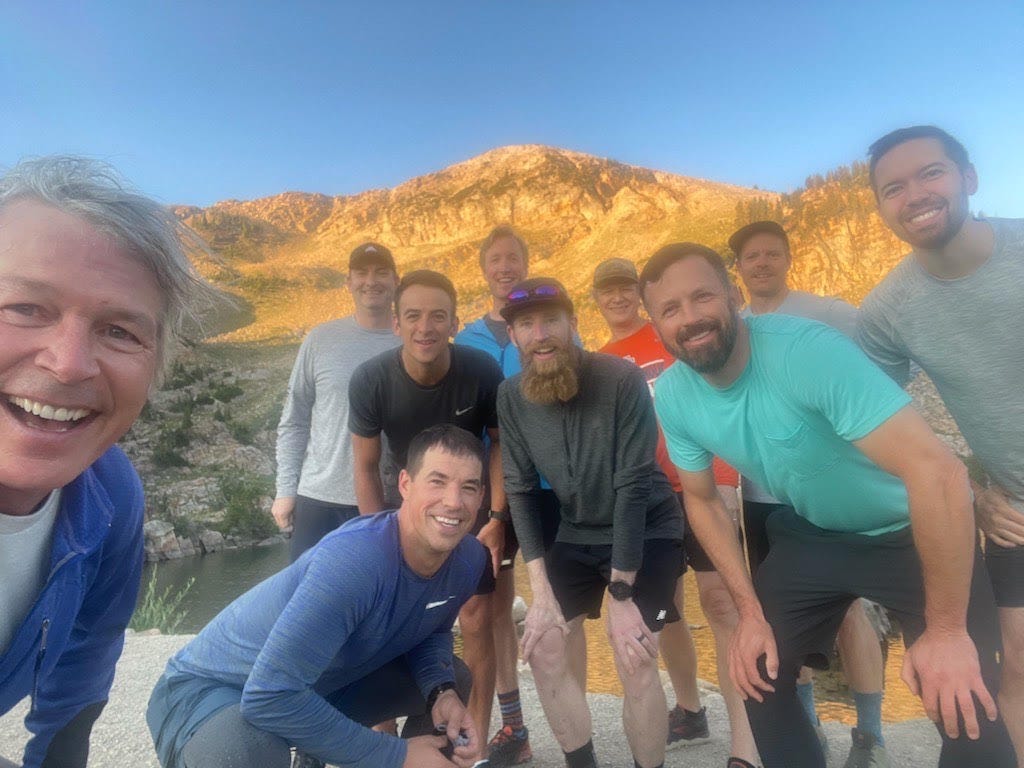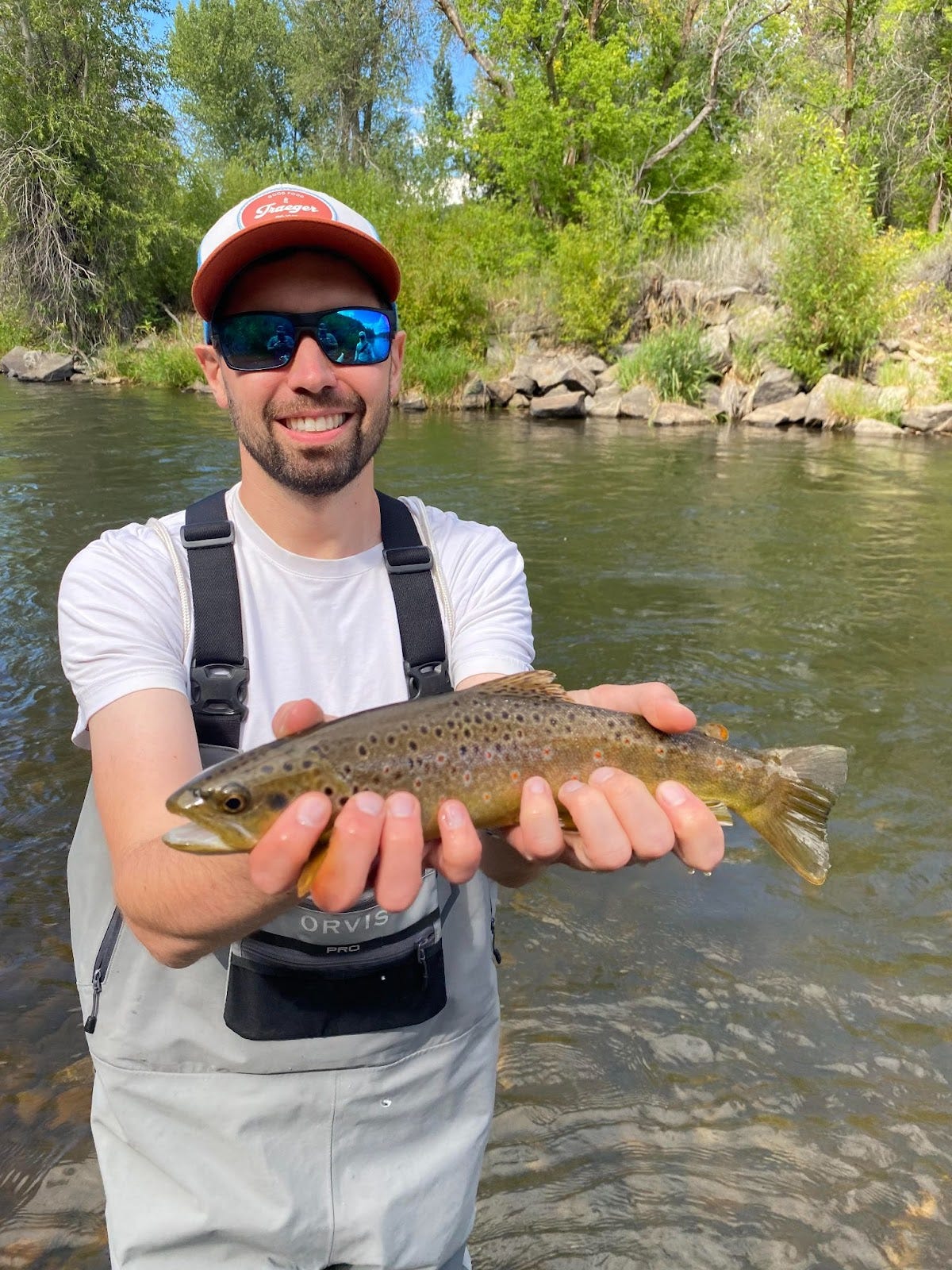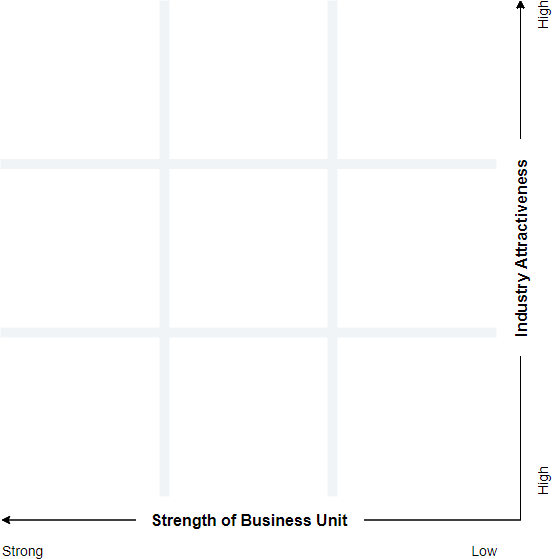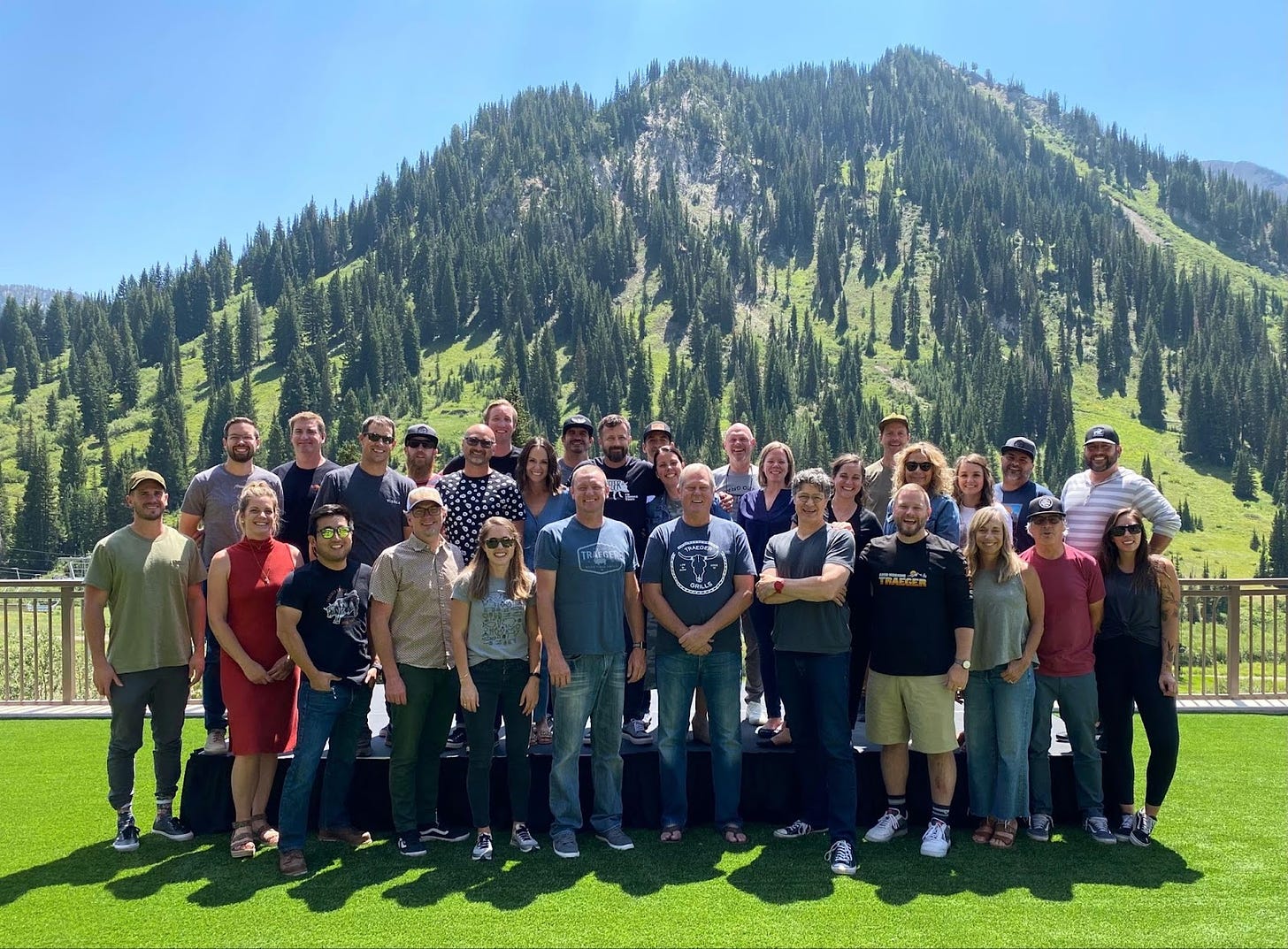Teams benefit from going offsite to recharge and plan the future. This is how to run one.
How Offsites Propel Growth
My company was in high growth mode, meaning we had grown about 30% year over year for the last five years and our annual revenue was about $500M. But to continue to grow we had to dramatically reevaluate our business – we couldn’t just add another $100M the next year without some significant changes and investments. Our leadership team realized we needed a dedicated time/place to have this critical discussion. Basically, we needed an “offsite” to plan our destiny.
This guide will walk you through what that offsite, plus other offsites, typically look like.
Thanks for reading Unwritten Business Guide! Subscribe for free to receive new posts and support my work.
Why “Offsite”?
It’s tempting for companies to hold meetings at their office. They have the space, set-up, and people they can call on at any given time. Given these built-in amenities it can seem like a waste of money to go anywhere other than the office. However, in my experience I’ve found that if you’re trying to make changes to your business it’s better done in a new environment that encourages fresh thinking.
Breaking away from the normal routine and setting drastically improves a team’s ability to look at things with a new set of eyes. I usually recommend teams meet at a hotel in a more remote location with a nice conference room. An offsite is usually two days, so the hotel is also convenient to allow people to stay overnight.
Also the study of positive psychology on teams has shown that teams who have shared experiences form stronger bonds. Specifically, if you have moments that create stories and memories that drive positive outcomes. So instead of just eating meals together, you should do activities that create lasting memories. Some of my favorites at offsites have been:
- Horseback riding
- Hiking
- Shotgun shooting
- Cake decorating
- Improv class

Hiking during an offsite

Fly fishing during an offsite
Some executives have hesitations about these – shouldn’t we maximize our time together doing work? Would if everyone isn’t physically able to participate (e.g., horseback riding is physically demanding)? Won’t this cost too much money?
My answer to all of this is you need to create a space where people can unleash ideas and be thinking about the business/coworkers in a new light. The benefits far outweigh the costs, so just plan it! Make necessary accommodations. Get scrappy. Companies of any size and financial situation can afford an offsite and activity (you don’t have to go to the Ritz Carlton in Hawaii to get the “insight & team building advantages” I’m talking about here).
Purpose
Offsites have two main benefits/purposes:
(1) Tackling really tough/important decisions in an environment that generates fresh perspectives/insights, whether it be with measurement, people, long-term strategic planning, or annual planning.
(2) Building team unity (which makes it easier to generate fresh perspectives/insights!)
I typically recommend three executive offsites per year, each with a different purpose, with some other half- or full-day sessions in between. Generally here’s the cadence and main topics:
- March – Measurement / People
- August – Long-Term Strategic Planning
- October – Annual Planning
A few details on what each of these different offsites look like:
March – Measurement / People
This session is to evaluate how the company is doing (ex: take a look at the key “vital signs” metrics, discuss how the current strategy is working, etc.), hold one another accountable, and rechart the course if necessary. This is also a good time to evaluate people. Oftentimes evaluating people opens your eyes to gaps in the organization, promotions necessary, and restructuring opportunities.
Here’s some questions you can use to evaluate your people:
(1) How are each of our top leaders at the company doing? What would we like them to do/change next year?
(2) Who are the up-and-coming “high potential” leaders at the company? How do we give them the opportunity to expand their roles this next year?
(3) Are there any people problems (culture, bad performers, compensation structures, etc.) that we need to address?
(4) How do we feel the culture at the company is doing? What do we want the culture to be? How will we establish our desired culture?
(5) Is our org structure right? Or do we need to change things so that things run more efficiently?
August – Long-Term Strategic Planning
This session is to plan the business 3 years out. It is not backwards-looking and requires some degree of imagination. Companies can change a lot in 3 years, and this is the time to plan it. For example, your core business could be plateauing and this is the time you would decide to shift your business model, get into a new category, or acquire a company.
In my experience it’s usually eye opening to put pen to paper to see where growth can come from. For example, you may see that if you doubled down with a key account it would lead to higher growth than expanding into a new market.
Here’s some questions you can use to form your long-term strategic plan:
(1) How do we need to evolve as a company? Are we in the right category? Are we positioned correctly? Are we innovating enough?
(2) How healthy are our sales channels? If there was a seismic change with our sales channels how exposed would our company be?
(3) What investments are we not making that we need to start making? What will our company look like in 3 years if we don’t make these investments?
(4) Is our product-market fit sustainable? How will consumers evolve over the next 3 years and are we positioned right to capture this movement?
October – Annual Planning
This session is to plan the next year. Specifically, this is where you forecast your business and discuss next year’s focus areas, projects, and budgets. Budget planning is always… weird. Everyone wants a bigger budget. It’s helpful for the CFO to clearly outline how much money there is to be spent and then have a prioritization discussion.
For example, it may become clear that the next year needs heavier investments in IT, which may mean the sales team can’t hire more people. This is the time to have those discussions. If not, you’re leaving it up to your finance department to choose everyone’s budget for the next year and they will likely rinse and repeat what has been done in other years, which leads to stagnation.
Here’s some questions you can use as you work on an annual plan:
(1) What should we start, stop, and continue spending money on?
(2) Do our focus areas align with our long-term strategic plan? Will this drive meaningful growth, improve the customer experience, or something else?
(3) Are we prioritizing the right things, or are we just letting the loudest person in the room dictate? (sometimes sales/marketing tend to oversell)
(4) Will our annual plan actually allow us to hit our goals? Are we too focused on one metric? On too many metrics?
Pre-Work: The Secret Ingredient of an Offsite
So now that you have an offsite location booked and the purpose decided, it’s time to put in the pre-work. Usually there is someone who is in charge of the offsite in terms of planning content, activities, etc. and then there are the attendees who need to put in some work beforehand. This is typically someone who is over strategy or an outside consultant. Here are some helpful pre-work activities:
Pre-Work Activities:
- A survey asking opinions on priorities
- A chart that is filled out
- A small presentation on department performance
- A 9-box of current priorities
- Discussion materials, such as data
These activities should either be captured and synthesized before (ex. survey results compiled) or brought to the offsite to be used in a discussion. I’ve seen this work well as a pre-read packet to be read before the offsite or an offsite packet that has printed materials to reference during discussions. The worst thing that can happen in an offsite is people showing up unprepared.

9-box grids like these are typically used in offsites
Calendar: What It Should Look Like
A typical offsite calendar looks like this (this example is for a long-term strategic planning offsite):
Day 0
Arrive the night before, set up, and eat dinner
Day 1
8:00am – Breakfast
8:30am – CEO Remarks
9:00am – CFO Review
10:00am – Evolving Consumer
1:00pm – Lunch
2:00pm – Financial Modeling 3 Year Plan
5:00pm – Wrap Up
6:00pm – Dinner & Activity
Day 2
8:00am – Breakfast
8:30am – Strategic Priorities
1:00pm – Lunch
2:00pm – Growth Drivers
5:00pm – Wrap Up and Go Home
Generally the sessions should allow depth to ensure decisions are made. I have also found it helpful to not be rigid in time allocations; it’s easy to push lunch back or move things around by day to ensure you’re getting the right outcomes.
Topics: Discussions & Debates
A typical offsite has various topics that should all facilitate discussion. As a rule of thumb, there should never be more than 20% of the time spent with presentations. With a high powered group you should consider the cost of the meeting and be utilizing the time to discuss and debate. The topics should be interesting and build energy.
Since every company is so different and the topics range widely, here’s a few thoughts on topics that should always exist at an offsite:
Consumer/Customer – companies need to be rooted in their consumer/customer. Executives need to stay grounded and close to them. If you’re not discussing your key accounts, evolving consumer, and competitive market then you’re just not going to be set up well for growth. With consumer brands like Nike they spend half of their offsites discussing their consumer.
Strategic Priorities – every company has priorities. These usually change slightly year to year, but you need to stay grounded in what those are. If your company has a core pillar of giving back to the community, for example, then that needs to be included in your offsites. If you’re trying to disrupt a market then keep that front and center.
Growth Drivers – this one is oftentimes overlooked. Companies need to plan where their growth will come from. They need to quantify it, make sure it’s realistic, and actually make a plan. Some of the best debates I have been part of have been around different opportunities.

Leadership offsite group, Traeger pre-IPO
What to do After the Offsite
The quality of an offsite can be measured by decisions made, alignment, and ensuring action items are captured and acted upon. While this Unwritten article on What To Do After a Meeting generally captures what to do, some important nuances for following an offsite should be followed.
Offsites typically have many ideas generated, and it’s important those are captured somewhere and systematically addressed. I typically recommend one person go through these and score them in order of impact and effort, and share that with the group in their next meeting. This helps everyone feel listened to and allows these good ideas to not die after ideation.
Another important piece of follow-up after an offsite is to create a one-pager on the plan. For example, if you were in an annual planning meeting and decided on the priorities for the next year, that should be clearly captured and shared with the whole company. The best companies take these and incorporate these into goal setting and measurement.
Lastly, do an offsite “post mortem” to understand what worked well and what should be done differently. This is important to continually improve, and equally helps everyone feel listened to. This can also generate ideas that can easily be used next time without having to think back a year from your last offsite.
In Conclusion
Offsites are a fantastic and essential venue to build cohesion with your team, plot the future, and measure your success and failures. While every company and team is different, every company can follow a similar cadence with offsites to ensure the right decisions are being made.


